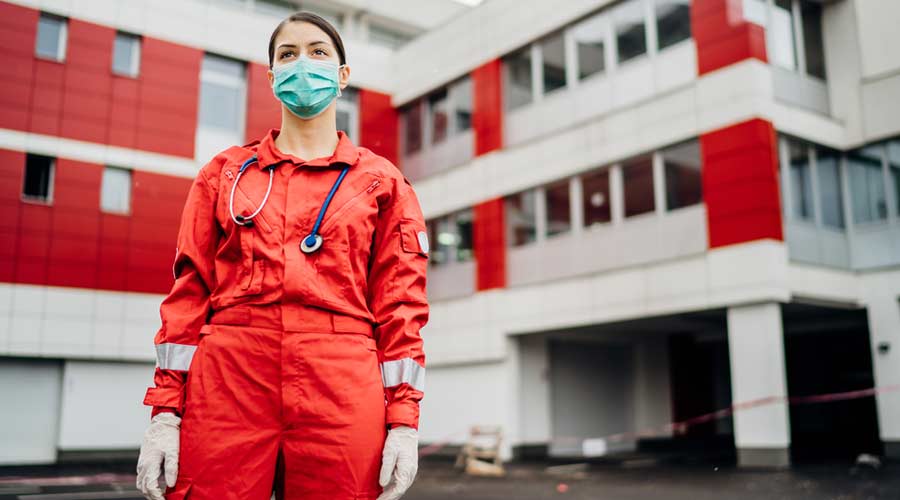Acts of violence and harassment in hospitals and other healthcare facilities have increased over the last year, partially because of the COVID-19 pandemic. While during the early days of lockdown, many people applauded frontline workers to show their appreciation, that did not prevent the physical harm that workers experienced on the job.
Healthcare workers are four times more likely to fall victim to verbal or physical abuse than workers in any other industry, according to The Joint Commission. Even so, the number could even be higher because statistics indicate many incidents go unreported.
Employees are now questioning whether their employers are able to keep them safe at work. Some states have gone as far as passing legislation that makes it a felony to harm healthcare workers. Meanwhile, some organizations are encouraging employees to wear an alarm button that identifies the location of employees who press the alarm and alert security personnel for help.
“For hospitals and healthcare facilities it is essential that violence prevention and response plans be in place and up to date,” says Daniel O’Neill with ADRM Security. “It is also essential that employees and staff members be familiar with the plan and know how to respond effectively and in a coordinated manner. When looking at the risk of violence, we examine likelihood, consequences, vulnerability and velocity. In some hospital settings, specifically hospital with emergency rooms, all of these factors could be considered high.”
It is essential that hospitals and healthcare facilities have a de-escalation plan in place in the event of workplace violence. According to a report by the U.S. Bureau of Labor Statistics, healthcare workers experienced 73 percent of all nonfatal workplace injuries and illnesses due to violence in 2018. Hospitals are emotionally demanding places for patients and guests, and by addressing security vulnerabilities, acts of violence could be reduced.
“To lower violence in healthcare facilities, a collaborative team should be developed with the specific mission of mitigating violence within the facility,” says O’Neill. “Staff members can play a key role in violence reduction. Training to use de-escalation techniques is very effective and has been used successfully at many major healthcare facilities.”
Meanwhile, the design of these facilities can also help prevent violence. Security professionals should be involved in the design process to provide guidance as to where meaningful systems can be put in place to keep staff and patients safe.
“Having security design professional involved in the design process at very early stages is critical,” says O’Neill. “Often times, security is not considered until late in the design process, and meaningful systems and violence prevention measures may not be able to be implemented effectively. Inviting security to the design effort early on allows time, space and resources for valuable violence prevention measures such as safe rooms, duress alarms, video surveillance, intercoms and other factors. Areas can also be specifically designed for high-risk patients and guests.”
Mackenna Moralez is assistant editor for Healthcare Facilities Today.

 Grounding Healthcare Spaces in Hospitality Principles
Grounding Healthcare Spaces in Hospitality Principles UC Davis Health Selects Rudolph and Sletten for Central Utility Plant Expansion
UC Davis Health Selects Rudolph and Sletten for Central Utility Plant Expansion Cape Cod Healthcare Opens Upper 2 Floors of Edwin Barbey Patient Care Pavilion
Cape Cod Healthcare Opens Upper 2 Floors of Edwin Barbey Patient Care Pavilion Building Sustainable Healthcare for an Aging Population
Building Sustainable Healthcare for an Aging Population Froedtert ThedaCare Announces Opening of ThedaCare Medical Center-Oshkosh
Froedtert ThedaCare Announces Opening of ThedaCare Medical Center-Oshkosh